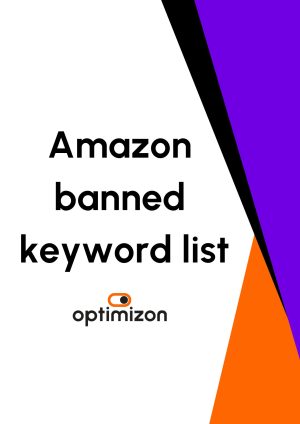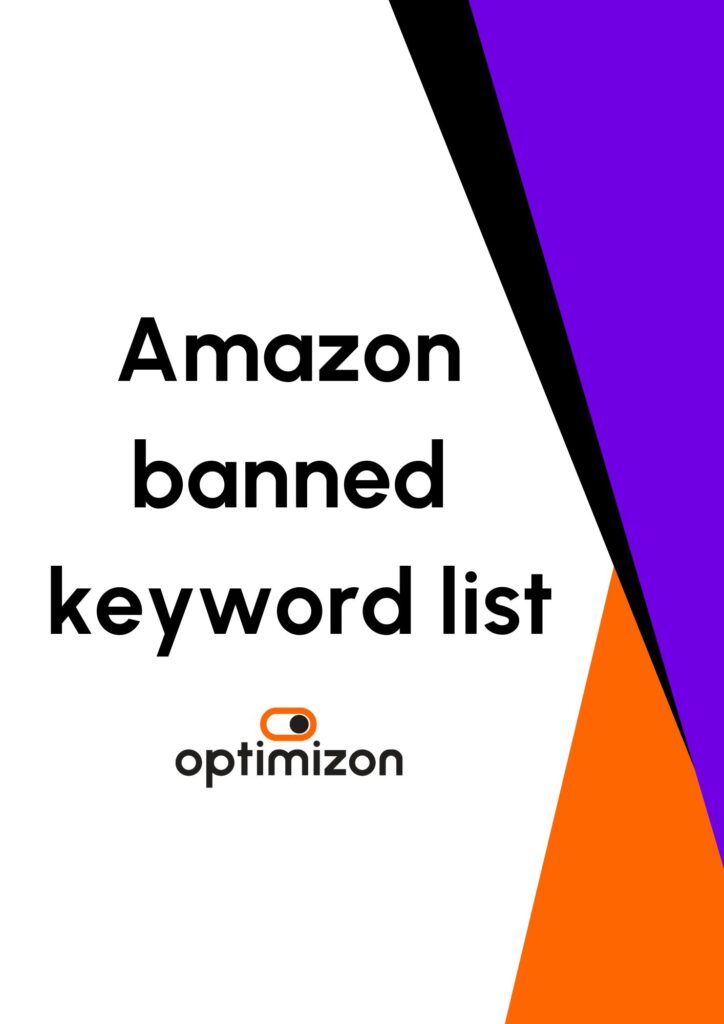How to Optimise Amazon Listings - Expert Tips
Learn how to optimise Amazon listings to increase your visibility and sales on Amazon. Optimizon’s content experts share their top tips for optimising Amazon product listings.
Let go of your Amazon content
There are numerous reasons Brands reach out to Optimizon. Perhaps it’s to take control of the brand on Amazon. It could be to drive efficiency within their Amazon account. Perhaps for help setting up FBA (Fulfilled by Amazon). Or, it could simply be to relieve the large burden of admin that comes with selling professionally on Amazon (and other third party shopping platforms), by outsourcing it to the experts.
Most Brands willingly tap into our expert services in order to drive efficiency. However, we often need to work a little harder to communicate the benefits of Amazon content optimisation to our clients.
This is perfectly understandable. Clients may see content optimisation as something ‘not too difficult’. It’s not unusual for new clients to say things like “We know our customers better than anyone, so we’ve written the Amazon product listings”. Or, “There’s a template so we’ve mocked something up internally which looks pretty good”. Or “We already have product descriptions, we’ll just use those”.
However, properly optimising Amazon content will make the biggest difference to your overall sales.
One thing that really pleases us is that brands never cease to be amazed about the impact our expert content writers will have on their sales.
Optimise Amazon Listings – Expert Tips
If you are determined to do it yourself, there’s still some good news for you. Our leading content expert, Mel Henson, who is the Head of Creative at Optimizon, has shared her top tips to help you optimise Amazon listings for your brand.
Mel has an extensive background in Direct Marketing and Conversion Rate Optimisation (CRO) and has even written a book about how to use copywriting to get higher sales.
Mel and her team bring professional copywriting techniques into the Amazon copy, such as storytelling and the AIDA framework (Attention, Interest, Desire Action) to structure the copy. They also deploy copywriting techniques such as embedded commands, second person singular, and present continuous tense.
Combined with a data-driven approach, Mel’s experience in optimising Amazon content pays dividends to every single Optimizon client. Here, Mel reveals some pro tips that will give you the best chance of optimising your Amazon listings, appearing above your competitors, and selling more on Amazon.
Amazon Optimisation Considerations
Before we get into the main components of how to optimise your Amazon listings, Mel reveals the three elements our creative team consider carefully prior to constructing the content:
1) Protecting the Brand
2) Fulfilling Amazon’s criteria
3) Conversions
It’s important to have a deep understanding of these factors. As a result, we’ll drill into what each of these considerations means in more detail.
1) Protecting the Brand
Mel reveals, “It’s important to take the time to understand your brand. This sounds obvious, but we don’t mean the superficial elements like logos and strap-lines. More, the emotional position your brand has in the hearts and minds of your customers. Its heritage, ethos, voice and personality.”
“It’s essential that the customer has the same brand experience wherever they shop in the eCommerce environment. Mel adds, “Too often we see brands and retailers offering up a premium service on their own platforms, but a secondary experience when listing on marketplaces such as Amazon or eBay.”
Giving customers the same brand experience regardless of where they purchase your items is imperative. It will also vastly improve your sales on third-party shopping platforms and marketplaces such as Amazon. Amazon Storefronts can even mirror a seller’s own website.
2) Fulfilling Amazon’s criteria
The second point to consider before constructing your listing is that the Amazon listing format is very restrictive. You’re striving for maximum impact within the limitations of Amazon’s listing framework. Therefore it’s important to understand that framework.
Amazon allows a title and five bullet points. Every category has a different character limit. Most are around 150 characters for the title and 255 for the bullets. It used to be longer, but Amazon is always changing the rules, so keeping abreast of the framework is also advised.
We’ll talk about how to structure your bullet points later.
Mel advises that “Keywords are vital to help it get your product found. But they need to be woven into the content in a natural way so that it reads well. Keep it natural and do not over-stuff content with keywords and phrases.”
Keyword Analysis
“It sounds obvious, but in-depth keyword analysis is recommended. Too often we see Amazon sellers choosing their words and phrases by ‘feel’, which results in them missing out on vast amounts of sales if they miss the mark.”
“Keywords are especially important when it’s a product that perhaps solves a problem the consumer didn’t know they had. For example, a car boot liner especially for dogs.”
It’s worth noting that certain punctuation such as pipes ‘|’ can’t be used. Although, they were allowed up to a couple of years ago. Again, it’s worth keeping abreast of Amazon’s latest guidelines.
Finally, be aware there are lots of words you can’t use in your Amazon listings, especially within the A+ content. Your content could get rejected if you use phrases like Award-winning, Guarantee or Customer service.
3) Conversions
Finally, it’s all about conversions. This means making sure that people buy once they’ve seen your listing.
Mel Henson is a leading expert in Amazon Conversion Rate Optimisation (CRO). She gives away her top techniques for producing the optimised Amazon listings with the highest conversion rates:
“Following years of testing across multiple product listings, we’ve found the following structure delivers the highest conversion rates.”
“We normally front load the first part of the bullets that are in caps to lead on a benefit, which means that the text becomes very easy for the customer to scan down and get the whole story.”
“We also write it in a different way depending on whether it’s being hunted (when the customer knows what they want, such as a refill for a water softener), browsed (such as a new vacuum cleaner) or in between (such as a new cat litter tray, where they start off hunting but end up browsing).”
“One of the most common mistakes that copywriters struggle with when they start writing for Amazon is that they don’t consider where the customer is in their buying journey. Anyone reading a product listing on Amazon is likely to be well on the way to making the decision to buy. That means the focus should be on why they should buy that particular product right there and then.”
“Typically new copywriters put too much effort into writing general reasons. Painting a picture of steaming hot coffee in the mornings, for example, when the reader has already got that in their mind. Instead they want to know how fast the coffee machine works, how quiet it is, or how easy the buttons are to press.”
Constructing Amazon listings – Top Tips
After considering your brand message, conversion tactics, and undertaking your keyword research, you can now create your content within Amazon’s content parameters.
Here are Mel’s tips for how to optimise Amazon listings:
Amazon rewards great copy
Optimised copy is the biggest asset to creating sales for your products on Amazon. This can be the winner or loser of a product.
As discussed, incorporating keywords helps you drive traffic to your Amazon listing. Make your message clear and concise, cut the waffle, and focus on capturing all of the benefits of the product. Not just the features.
Again, making sure the content has a high conversion rate is imperative. If the copy does not make the buyer convert quickly, Amazon will penalise you in their search rankings.
Mel points out that “Getting the content perfect is a virtuous circle because Amazon promotes products up the search rankings that convert better.”
“If in doubt, look to some top-selling products in competitive categories for inspiration. Often, these products contain compelling reasons to go ahead and make the purchase.”
Title – Getting Found on Amazon
The Title is the most important factor for search when writing copy for Amazon. In other words, getting traffic to the listing is largely dependent on the title.
Amazon has some strict guidelines that have to be adhered to. However, within the title, it’s a chance to make it clear to your customer what is on sale and weave in your highest ranking keywords to help organic search.
Again, don’t stuff keywords into a title. Choose the most important ones that can fit naturally into your title, and reflect your product.
Mel advises Brands selling multiple products that “Taxonomy is important to give a good impression of your brand. Each product in the brand should have their titles written in a systematic and consistent way.”
Bullets – Scanability and Storytelling
Getting traffic to the listing via a well-constructed title is the first part. Making the customer convert is the second part.
Bullets are an important component of making your content highly convertible (i.e. a higher proportion of visitors to the product make the decision to buy it).
Mel reveals how to produce highly optimised bullet points within Amazon product listings: “Ideally, each bullet should have a single theme, leading with the main benefit in capitals, with the supporting features in lower case. This makes it scannable for those who just skim read.”
“The framework is also important. The information in each bullet should be presented in a way that mirrors the customer buying journey so that the storytelling pulls them through to the purchase.”
“We recommend that bullet points are written in third person as if Amazon were endorsing the product. This capitalises on the bond of trust that the consumer has with Amazon. It gives the perception that products sold on the platform are carefully selected and approved by Amazon.”
Images – Visual Bullet Points
We don’t need to tell you how important images are when it comes to communicating your product to potential buyers. You can’t achieve great listings without great images. If your product images aren’t up to scratch or were designed for display on a different platform, it is wise to invest in tailored Amazon images.
A relatively recent method to increase conversion rates is to curate the Product Listing Images. This is pushing the boundaries of Amazon’s technical guidelines, but it’s a sure-fire way to turbo-boost your product listings.
“Instead of simply uploading a selection of photos and icons, each one can be designed with a cohesive visual theme and Instagram-style graphics.”
“Short text can be added to each image, in the same framework as the bullets.”
Much of the success of this technique is driven by Mobile users, who make up approximately half of users (and this proportion is growing every year).
Mel points out that “Mobile user’s Amazon experience means that they may not see the text bullets at all, so the message conveyed by the images is vital.”
Storyboard Image Structure
The main structure we follow when presenting storyboard image ideas are:
- First image always to be product image on a plain white background with no writing or logos (following Amazon’s requirements)
- PT02-PT04 – branded design images but focus on product imagery again, including captions that call out on key features or technical info.
- PT05-PT06 – branded design images but include lifestyle imagery of the products being used and enjoyed.
- PT07 – If possible to include a quick 30 second video from the brand. Quick shots of the key features of the products and anything about the brand, where it’s designed/produced or other important messaging.
We do it in this order so the customer goes on a journey through the images. They are already at the part of the buying funnel where they’re almost ready to buy; we make sure to include information that confirms their decision.
Our content experts also recommend that you include the brand’s logo on the images throughout, using colours and fonts from the brand guidelines to enhance brand awareness and buyer experience.
Also make sure the look and feel are in keeping with the A+ content, storefront and other external marketing platforms, so it’s all consistent and recognisable.
Even though Amazon’s guidelines are slightly against images with writing on top, we have a track record at managing to get these live. As a result, they can have a big impact on conversions.
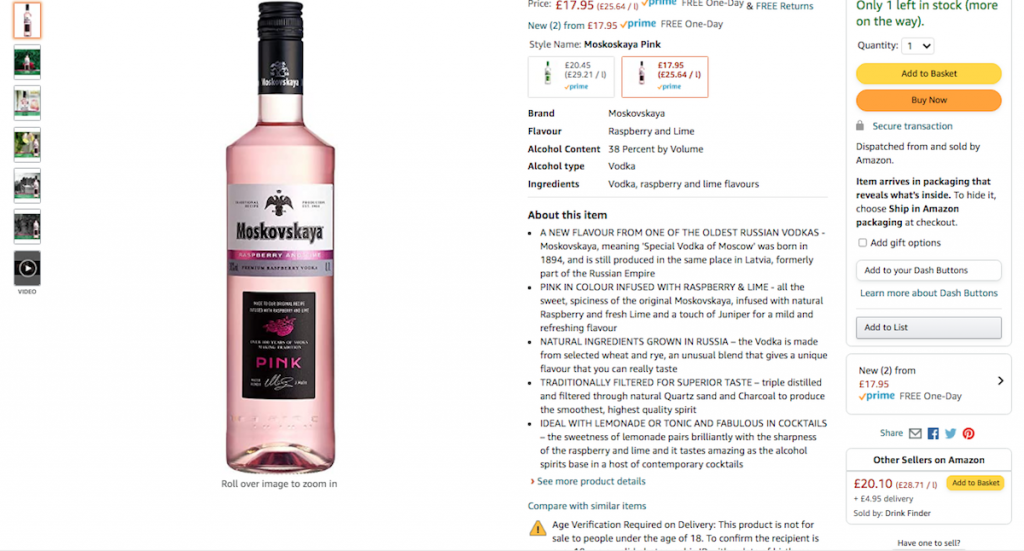
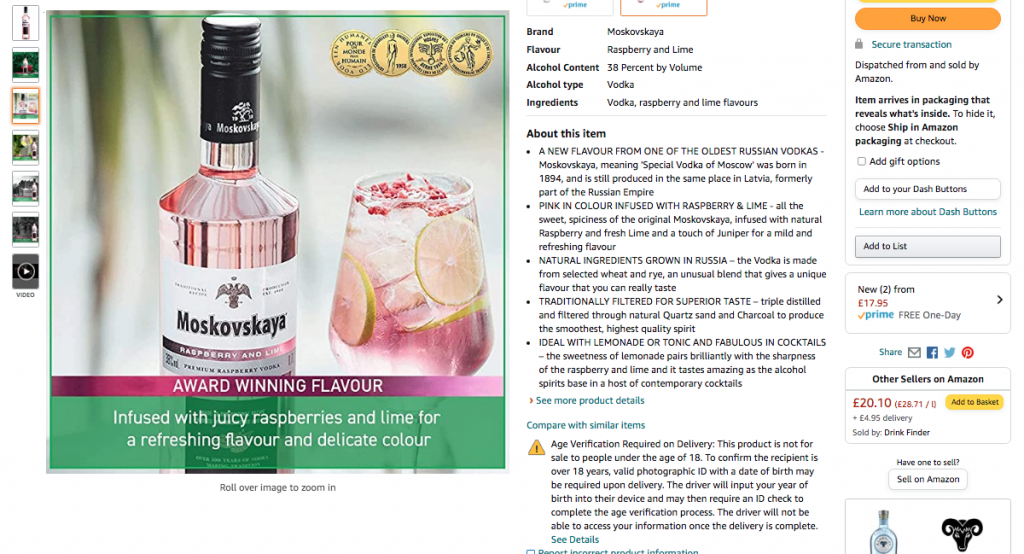
A+ Content – A deeper dive into your brand
If you have taken control of your brand on Amazon, you’ll have the opportunity to create A+ content. Amazon A+ content refers to a listing’s product description from brand owners, which allows them to tell their brand story. This can be done with enhanced image content.
A+ content is a premium content feature. The use of rich texts, videos, and images can really separate your description from regular listings.
Amazon says that A+ content increases sales by approximately 10%. Once the buyer is drawn into your bullets they may be interested to find out more, or they may stumble on it as they scroll down the page.
Mel’s top pro tip for A+ content optimisation: “Whereas you want the bullets to essentially be ‘Amazon talking about your product’, the A+ content is the opportunity for you to talk directly to the consumer. It is a chance to expand on some important features, or to talk about your brand story.”
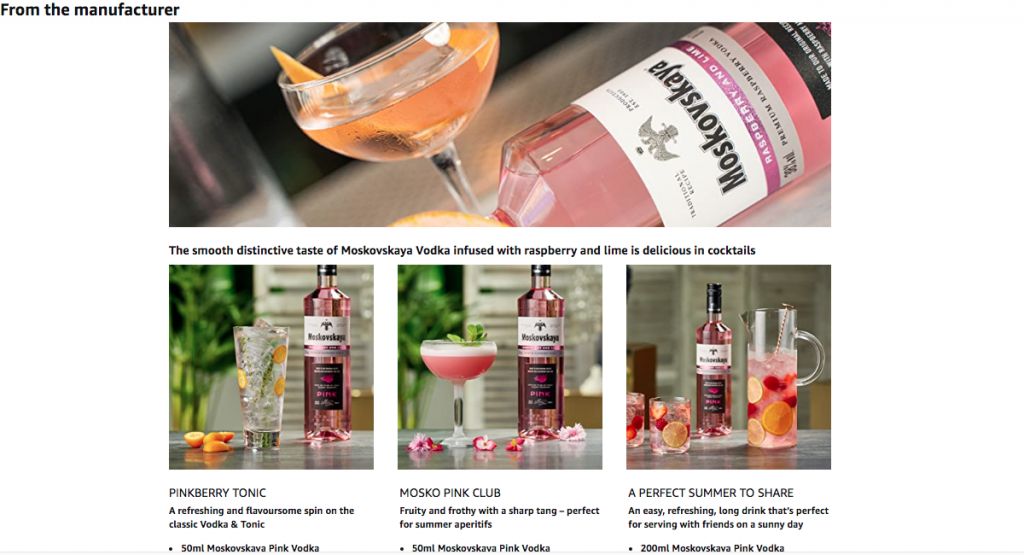
“A+ also has the functionality of the Comparison Chart – a table of up to 6 products that have live ASIN links to other similar products made by you. This not only allows for cross-sells and up-sells, but also helps boost search rankings.”
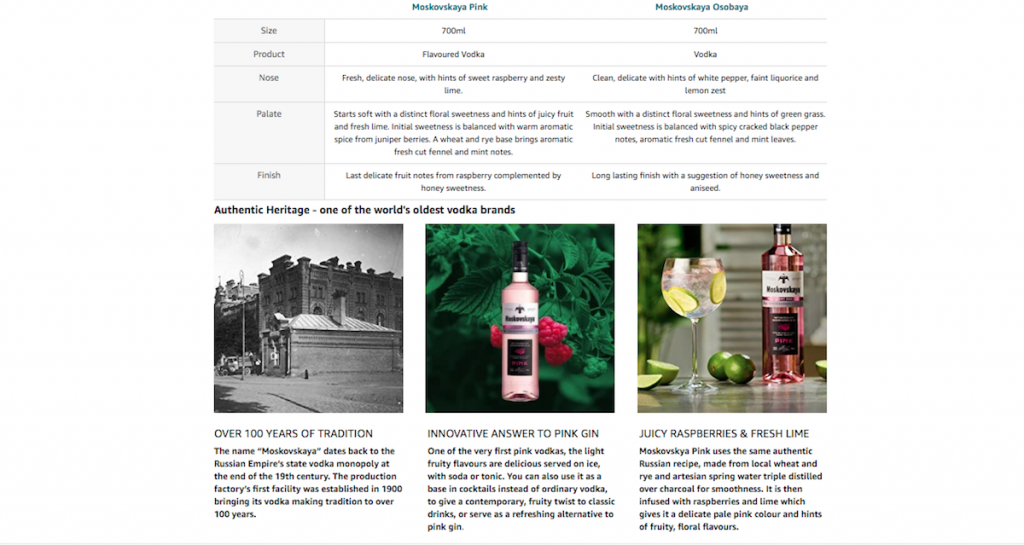
Make your Amazon listings the best they can be
It’s clear that there’s a lot to think about when creating and optimising content for Amazon listings.
We test new copywriters all the time, and for every one that we take on, we reject six. It then takes several months of training even before our experienced copywriters are really hitting the mark every time.
Plus Amazon rules continually change, so you must keep up to speed with the latest guidelines, and the copy may need to be written differently to keep up.
Creating and optimising Amazon listings isn’t easy. But hopefully our top tips and expert insight should help you on your way.
Often, we need to submit listings several times with minor tweaks before it’s accepted by Amazon. This can be time consuming and frustrating, but it’s always worthwhile.
If there is anything you or your Brand needs help with, or you have any questions about improving your sales on Amazon, please reach out to our team today.


